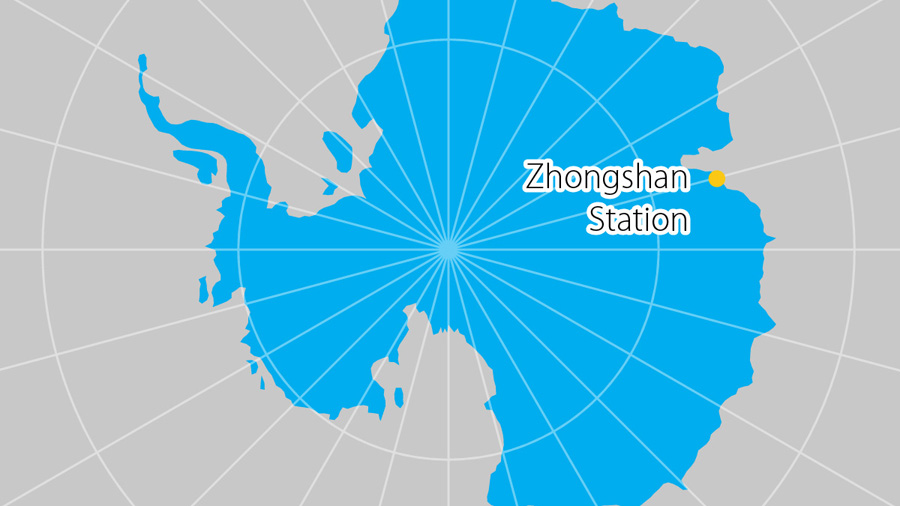Belt and Road and Airport Antarctica

China has announced it will build the first major airport in Antarctica, in a move that will be of concern to ecologists and to Antarctic treaty nations. China’s Science and Technology Daily reported that China’s 35th Antarctic expedition will leave this Friday for the region, where its major task is to build the airport, which is expected to be located along the ice sheet, 28 kms from the China-built Zhongshan station on the east coast.
Chinese scientists built a 4 km long, 50 meter wide runway for fixed-wing aircraft in 2009 during the 25th expedition in the Antarctic, and the country seems set to join the US, Russia, Britain, Australia, and New Zealand, among others, in having airfields in the Antarctic, which is rich in natural resources such as silver, gold, platinum, and coal.
In 2010, China constructed a temporary airport “Feiying” on the ice sheet, according to the earlier official Chinese media reports. The new Zhongshan airport is intended to help China gain management authority of airspace over the South Pole. “The new airport allows medium and large transport aircraft, like Boeing planes, to take off and land in the South Pole, shortening transport time as well as enhancing efficiency.” Zhang Xia, director of the Polar Strategy Centre at the Polar Research Institute of China (PRIC) has stated in State media.
He noted that the airport will complete China’s aviation security system in the Antarctic, including communications and meteorological support systems. The new airport will provide logistical support to Chinese scientists’ research there. Specifically, the airport will decrease the exposure time of researchers in the polar environment, as well as medical aid time, he said. However, analysts pointed out that the project faces many difficulties. “Around 99.5 percent of the polar land is covered with accumulations of thick snow leading to a lack of hardness to build an airport,” Zhang said, adding that the flat area in the Antarctic is not enough either, and some original districts have already been occupied by other countries.
He noted that the existing runway near the Taishan station is only fit for light aircraft equipped with sleds, which have limited transport capabilities. As global warming melts sea ice across the poles, both regions are becoming development hot spots, with major powers like Russia and China seeking control of resources and transport routes.
The Antarctic is governed by the Antarctic Treaty established in 1959, and signed off by Argentina, Australia, Belgium, Chile, France, Japan, New Zealand, Norway, South Africa, the USSR (now Russia), and the United States. China has observer status but is not a signatory to the actual treaty, which lays down a number of criteria over managing Antarctic resources. However, it is a consulting member, a reflection of the fact that China made a claim to part or all of Antarctica in 1985 as “national territory”.
China’s Zhongshan Station is the second of now four Chinese research stations in Antarctica and was opened on February 26, 1989. It is managed by the PRIC, and is located in the Larsemann Hills in East Antarctica. The station is supplied by annual visits of the Chinese Antarctic support vessel Xuě Lóng. The station can accommodate 60 summering personnel and 25 wintering personnel. It is a base for research on marine, glaciological, geological, atmospheric sciences, and for expeditions inland.
“It remains to be seen how long it will be before China militarizes the Antarctic and lays sovereign claims on its territory,” says Chris Devonshire-Ellis of Dezan Shira & Associates. “A pattern of behavior has already been established and upcoming claims can almost certainly be expected to be made. Whether this will infringe on the Antarctic territory as a whole and will lead to the Antarctic being divided up into sovereign claims backed up by military support is an open ended question.”
About Us
Silk Road Briefing is produced by Dezan Shira & Associates. Chris Devonshire-Ellis is the practice Chairman. The firm has 26 years of China operations with offices throughout China, Asia and Europe. Please refer to our Belt & Road desk or visit our website at www.dezshira.com for further information.
 Related Reading:
Related Reading:
![]() China and Chile: FTA, Market Size Boost Opportunities for Investors
China and Chile: FTA, Market Size Boost Opportunities for Investors
![]() The RCEP Trade Deal and Why its Success Matters to China
The RCEP Trade Deal and Why its Success Matters to China
![]() The Arctic Link: Connecting Norway, Sweden, and Russia to China Trade
The Arctic Link: Connecting Norway, Sweden, and Russia to China Trade





